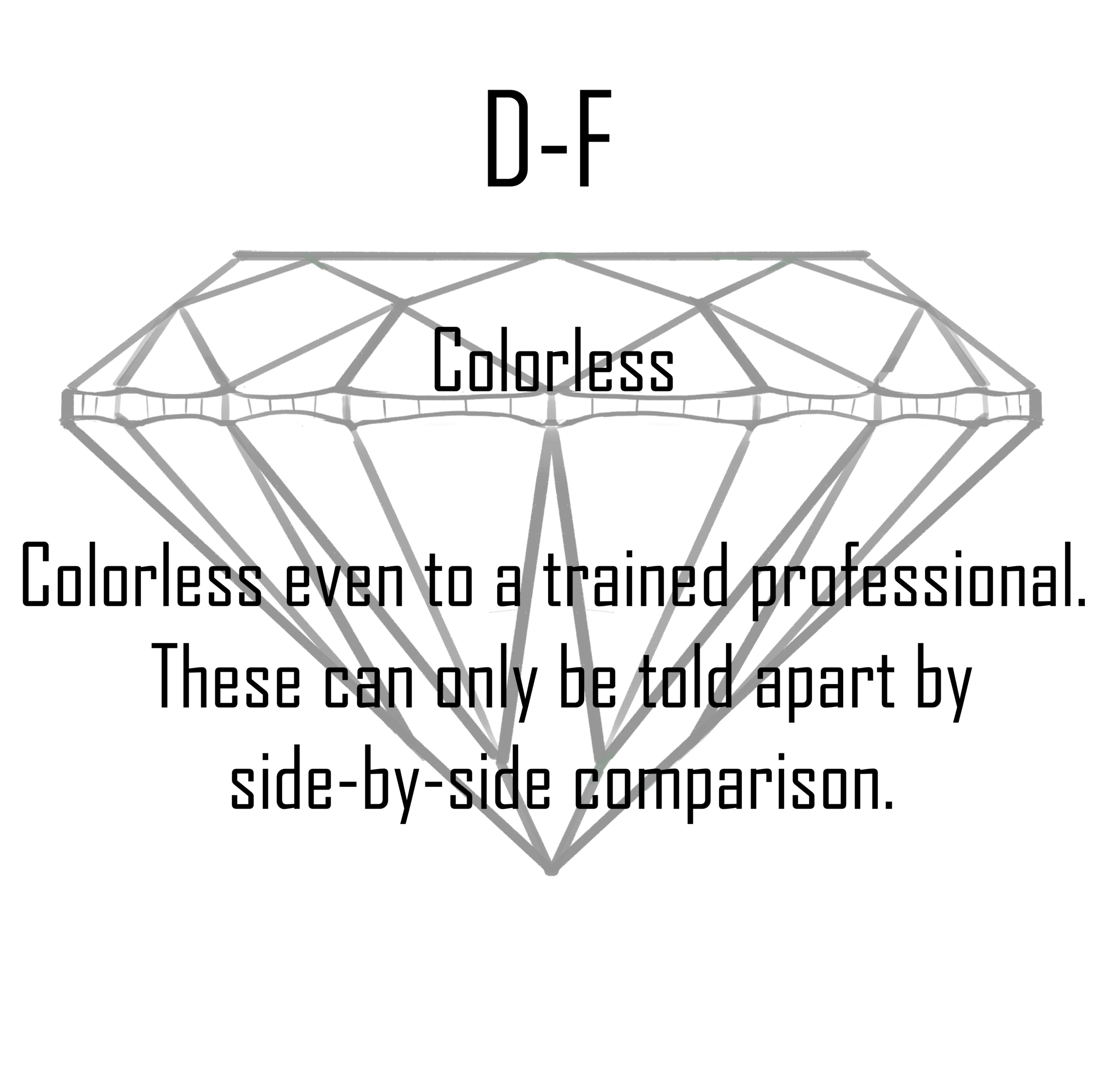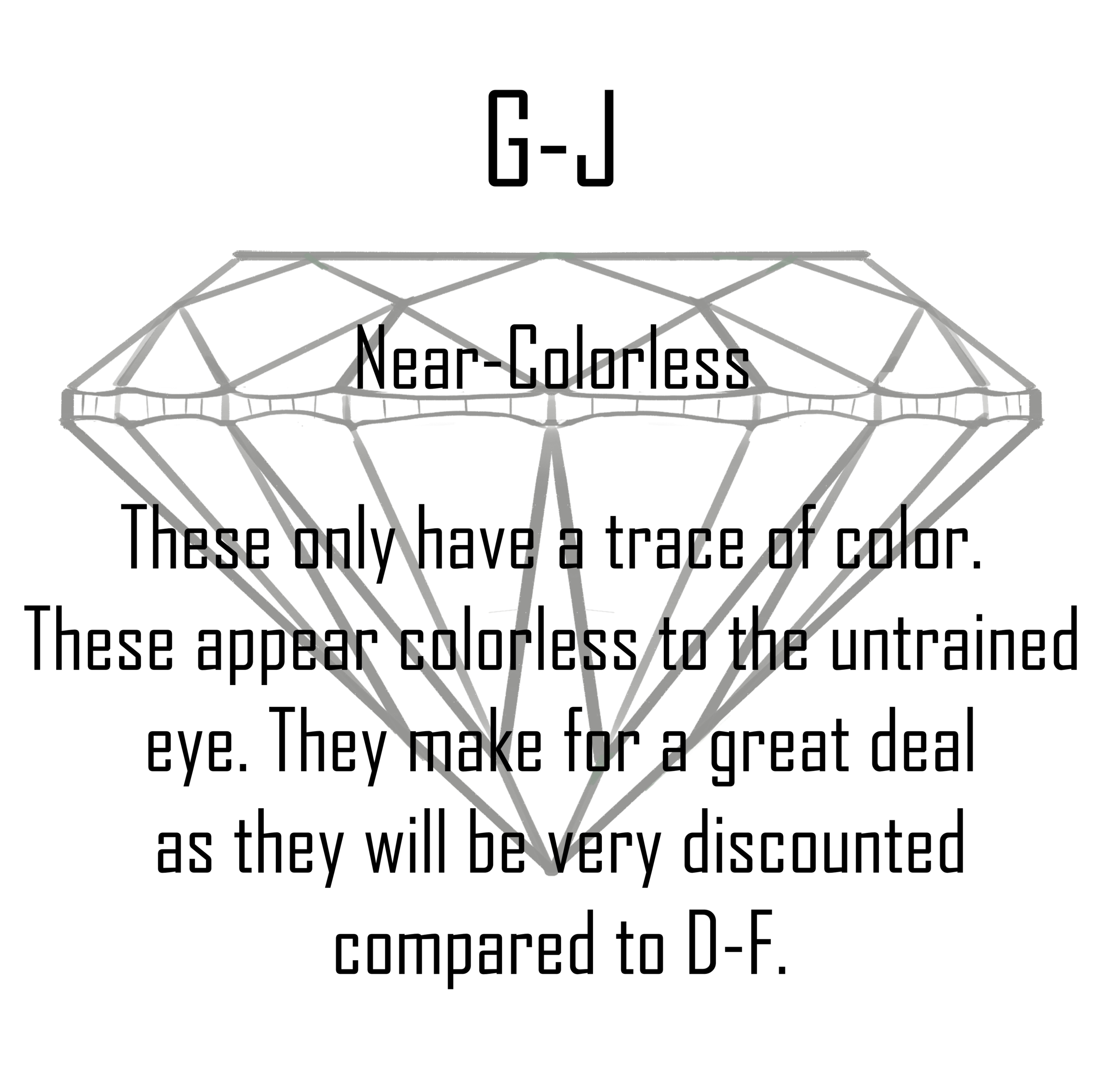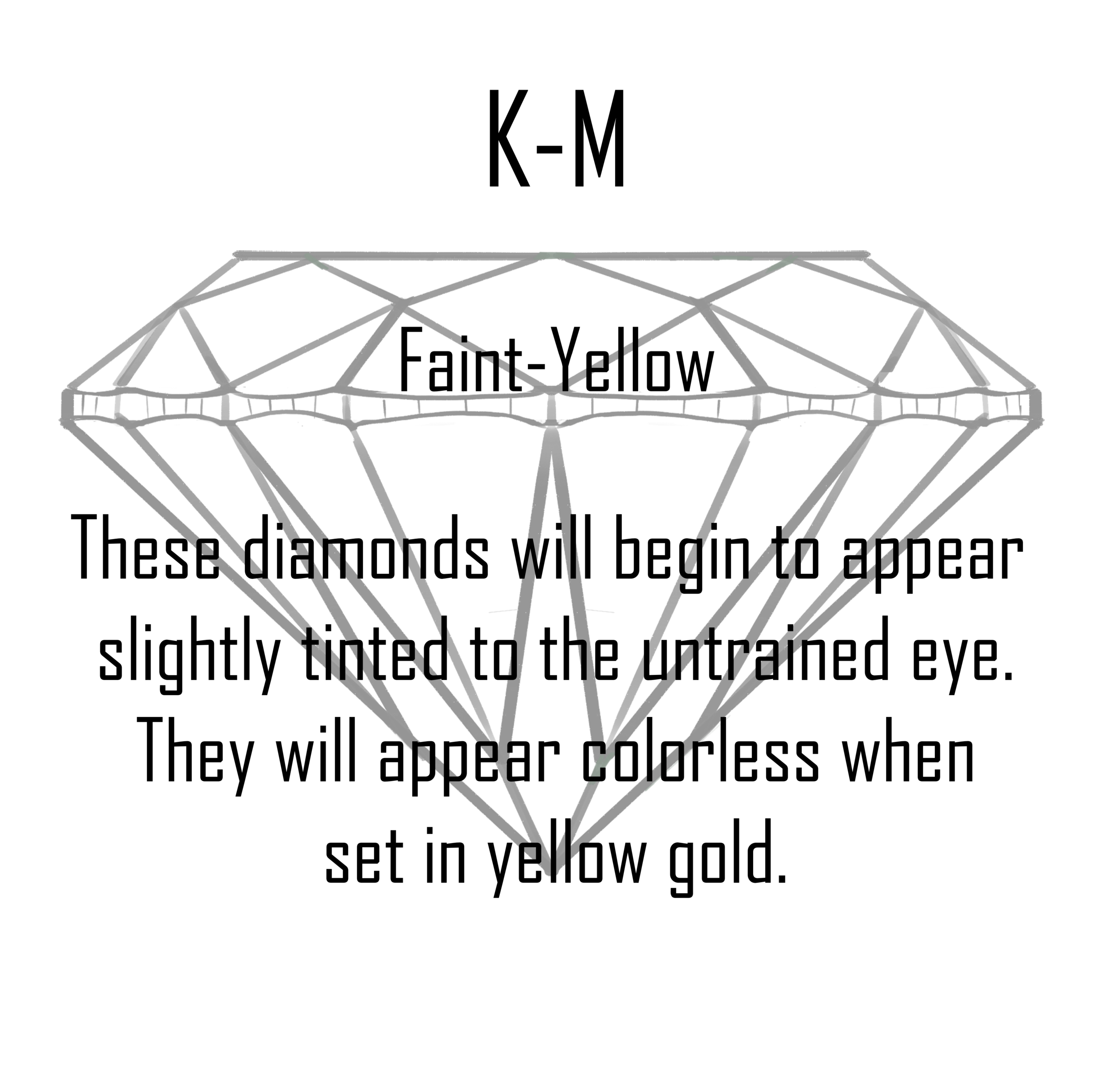
Diamonds
We have been appraising diamonds since 1977 and hope to make this process easier for you.Diamonds are one of the most difficult stones to shop for.
Since every stone is unique, purchasing a diamond requires a multi-faceted approach. While it may seem intimidating at first, there are only a few things you need to know in order to be able to purchase a diamond with confidence. It’s all explained on this page.
There are four C’s that need to be looked at to determine the value of a diamond. Each component factors into the price and quality of any diamond. They are used as an industry standard to compare diamonds.
color
clarity
cut
carat-weight
All diamonds are graded in northern sunlight from 10am-2pm under 10x magnification to ensure a standard.
Color
The first C is color. Colorless diamonds are prized due to their refracting properties. A completely colorless diamond will reflect the entire visual spectrum from a light source. Colorless diamonds are graded on a scale of D-Z. This scale was created by the Gemological Institute of America as a standard for grading diamonds. The images below will explain the difference between the different colors of diamonds.
After Z, color begins to become an asset rather than a detractor. Diamonds in this range are referred to as “Fancy,” and can become incredibly expensive. These diamonds are graded under a different color system based off of the color and how vivid it is. Some of colors diamonds come in are yellow, brown, gray, blue, green, orange, and pink. The rarest and most expensive diamond color is red.
Clarity
The second C is clarity. Clarity is a grade of how flawed a diamond is. It is affected by blemishes and inclusions in the diamond. Clarity is graded on a scale that ranges from F-I3. Click on the images below then hold your mouse over the enlarged image to learn more.
Cut
Round Brilliant, Marquise, Princess, and Baguette cut stones.
The third C is cut. The cut of a diamond is very important as it determines the stone’s ability to reflect light. The most commonly used cut is the round brilliant, as you can usually get two stones out of one uncut diamond during the process. All cuts have very specific proportions to maximize their brilliance. Diamonds will lose their value as the cut strays away from ideal proportions.
Stones can be found in all manner of shapes other than round.
The stone on the bottom is closer to ideal proportions for a brilliant style diamond
Carat-Weight
The last C is carat-weight. Carats describe the weight of the diamond. The carat-weight has been an international standard since 1913. 1/5 of a gram is equal to one carat. Diamonds are usually priced by carat, yet a smaller diamond that is graded much better in other areas could be worth more than a larger one. However, larger stones are much rarer so you will usually pay a premium for a larger stone.
Information on the Cullinan Diamond from Robby.

















